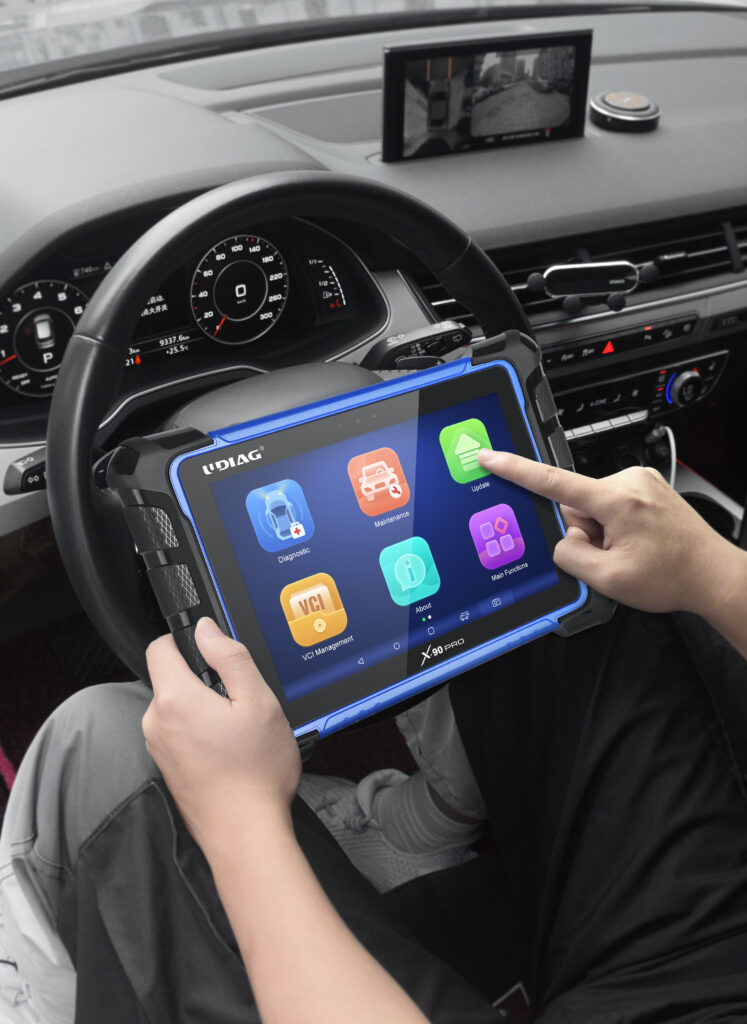Get Inside Your Car’s Brain: How Diagnostic Tablets Work.
2023-10-17 by UDIAG
In the world of modern automotive technology, the ability to peek inside your car’s brain has become not only possible but essential. Diagnostic tablets have revolutionized the way we understand and maintain our vehicles. These powerful tools offer insights into your car’s inner workings, helping you identify issues and keep your vehicle in top condition. In this in-depth guide, we will delve into the fascinating realm of diagnostic tablets, exploring how they work, their significance, and much more.

Understanding the Basics
To begin our journey into the world of diagnostic tablets, let’s start with the basics. What exactly are diagnostic tablets, and what purpose do they serve?
Diagnostic tablets are portable, handheld devices equipped with advanced software and hardware that allow mechanics and car owners to access and interpret data from a vehicle’s onboard computer. These tablets establish a direct line of communication with your car’s internal systems, providing real-time information about its performance and any issues it may be experiencing.
The Significance of Diagnostic Tablets
You might be wondering why diagnostic tablets are such a big deal. Well, there are several compelling reasons:
- Efficient Troubleshooting: When your car’s “Check Engine” light comes on, a diagnostic tablet can quickly identify the problem, saving you time and money on extensive diagnostics.
- Cost Savings: By pinpointing issues early, you can address them before they worsen, potentially saving you from expensive repairs down the road.
- DIY Repairs: For the DIY enthusiasts, diagnostic tablets empower you to tackle certain car issues on your own, reducing the need for professional mechanics.
- Environmental Benefits: Efficient diagnostics reduce emissions by ensuring your vehicle operates at peak performance.
Get Inside Your Car’s Brain: How Diagnostic Tablets Work
Now, let’s get into the nitty-gritty of how diagnostic tablets actually work.
Diagnostic tablets utilize a standard OBD-II (On-Board Diagnostics) port, typically located near the steering column. Here’s a simplified breakdown of the process:
- Connection: The tablet connects to the OBD-II port using a specialized cable, establishing a secure link with your car’s computer.
- Data Retrieval: The tablet sends requests for data, and the car’s computer responds by providing information on various systems, from engine performance to emission levels.
- Data Analysis: The tablet’s software interprets the data, highlighting any anomalies or error codes.
- User-Friendly Interface: The results are presented in a user-friendly interface, often with clear explanations and recommendations.
This process allows car owners and mechanics to access vital information without disassembling the vehicle, providing a quick and accurate diagnosis.
Advantages of Diagnostic Tablets
- Real-Time Data: Diagnostic tablets provide real-time data, offering an immediate snapshot of your car’s condition.
- Comprehensive Insights: They can access a wide range of data, covering everything from engine temperature to fuel efficiency.
- User-Friendly: These devices are designed for ease of use, making them accessible to both professionals and car enthusiasts.
- Customization: Many diagnostic tablets allow for customization, enabling users to monitor specific parameters of interest.
Common Diagnostic Tablet Features
When choosing a diagnostic tablet, it’s essential to look for specific features that suit your needs. Some common features include:
- Live Data Streaming: This feature displays real-time data, allowing you to monitor your vehicle’s performance while driving.
- Troubleshooting Guides: Many diagnostic tablets come with built-in guides to help you interpret error codes and provide suggestions for repairs.
- Data Storage: Some devices allow you to save diagnostic reports for future reference or for sharing with a mechanic.
- Wireless Connectivity: Bluetooth and Wi-Fi capabilities enable wireless connections, making the diagnostic process more convenient.
FAQs
1. How do I choose the right diagnostic tablet for my car?
Choosing the right diagnostic tablet depends on your specific needs and the make of your vehicle. Research thoroughly and consider compatibility, features, and user reviews before making a decision.
2. Can I use a diagnostic tablet if I’m not a mechanic?
Absolutely! Many diagnostic tablets are designed with user-friendliness in mind, allowing car owners to diagnose and even fix certain issues themselves.
3. Are diagnostic tablets only for identifying issues?
No, they can also be used for routine maintenance, monitoring vehicle performance, and even optimizing fuel efficiency.
4. Do diagnostic tablets work with all car models?
Most diagnostic tablets are compatible with vehicles using the OBD-II standard, which includes the majority of cars manufactured after 1996.
5. Can diagnostic tablets damage my car’s computer?
When used correctly, diagnostic tablets are safe and do not pose a risk to your car’s computer.
6. How often should I use a diagnostic tablet on my car?
Regular checks, such as monthly or with every oil change, can help ensure your vehicle is always in top condition.
Conclusion
In the age of advanced automotive technology, understanding how to get inside your car’s brain is more accessible than ever, thanks to diagnostic tablets. These invaluable tools offer us a glimpse into our vehicle’s inner workings, providing real-time data, troubleshooting advice, and the means to keep our cars in peak condition. Whether you’re a DIY enthusiast or a professional mechanic, a diagnostic tablet is a must-have companion for maintaining your beloved automobile.
So, if you’re ready to take control of your car’s health and performance, consider investing in a quality diagnostic tablet. It’s a decision that will not only save you time and money but also empower you with the knowledge to keep your car running smoothly for years to come.


